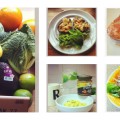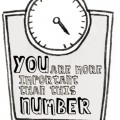I have an awful lot to thank Paleo for.
Paleo started the fantastic journey I have been on to completely overhaul my lifestyle. However, I’ve learned heaps along the way and have come to understand why Paleo can sometimes come under fire. Paleo means many different things to equally as many people and is therefore open to a fair amount of misinterpretation.
Here are some top tips for picking the ‘proper’ Paleo pathway for you:
- Not all animals are equal…
It took me five months to realise sausages for breakfast 7 days a week probably wasn’t the best of ideas. Yes they were gluten free and free range pork but they are also a processed red meat proven to cause incidences of stomach and bowel cancer. Whilst Paleo advocates a high intake of protein it’s important to think about where this protein has come from and what it means for your general health and wellbeing. At the same time, it’s not just about meat. Be sure to include 3-5 portions of (wild, not farmed) fish a week.
Organic, free range meat really is the only way to go. It comes at a price and therefore you’ll need to cut your cloth (for your cut) accordingly. Invest in a good and sizeable freezer. Make the most of butcher special offers by buying in bulk and freezing. Buying direct from farms will also make a big difference – I once shared a whole lamb with four friends! Don’t shy away from thriftier cuts – organic free range chicken thighs will trump an antibiotic injected supermarket ‘chicken’ breast fillet every time.
2. Your life shouldn’t become some Vegas-style all you can eat buffet
Paleo pays no attention to calories at all whatsoever. This counts for hell of a lot. When Paleo is used as a means to lean out a little, it works on a premise of eating the right foods as and when you’re hungry. Easier said than done however – especially for those like myself with a larger appetite. Cavemen didn’t eat a 100g packet of cashews at the bus stop following a hard day at the office. You don’t, believe it or not, need to eat a whole hot roast chicken straight from the oven (guilty as charged). Take time to appreciate what’s on your plate, enjoying each mouthful slowly. Load up on greens (you can never have too many greens, honest) – especially the cruciferous kind like broccoli, cauliflower, cabbage, sprouts, watercress and rocket. Their phytochemicals offer proven cancer prevention.
3. Paleo carbs are still carbs
Whilst the saintly sweet potato kicks its big white sister into touch from a nutritional benefit point of view it still very much remains a carbohydrate – albeit a low GI one. If your goal is to lean out a little then you want to be keeping an eye on the number of starchy carbohydrates you’re consuming. The same is also true of fruit given its sugar content. Ideal timing for carbs if you’re aiming to lean out is straight after exercise. If you’re not feeling satisfied following a meal that contains less starchy carbohydrate, load up on those greens to compensate. When it comes to fruit, berries are your best friend – not only for their antioxidant properties but also their high fibre content which slows down the absorption of sugar.
4. No one died from eating a chickpea…
…or eating a morsel of cheese or drinking a cappuccino as far as I know. Following a pure Paleo lifestyle means you also buy into the outlined “foods to avoid”. These include grains, dairy, legumes, sugars and transfats. For reasons I’ll explain in a later post I can fall in with the exclusion of grains, sugars and transfats. However, when folks asked me why I didn’t eat whole organic dairy and chickpeas (legumes) anymore I simply responded with “because they’re not Paleo”. Two years down the line and you’ll regularly see Yeo Valley plain Greek yogurt (dreamy and creamy!) and at least one, more often than not two, pots of hearty houmous in my Ocado shop. The Paleo approach excludes dairy and legumes simply because they can bring on intolerances in lots of people. There is however nothing wrong with high quality dairy and pesticide free legumes if you’re not allergic to them. Take them out for a month, see how you feel without them, bring them back in and go from there. Be mindful however, as with starchy carbohydrates, that dairy won’t help you in terms of leaning out.
5. It’s all about you
Paleo is a superb guideline that will help you learn more about whole, real, good foods. It isn’t however the be all and end all and it’s a framework that lends itself to being adapted to your own personal way of life that’s underpinned by clean eating. Don’t let the purists (there are lots of them) grind you down. The purists are completely within their right to following a strict Paleo lifestyle but the lifestyle you choose to follow can be one that offers far greater flexibility. Michael Pollan’s ‘In defense of food’ sums it all up so brilliantly. I’ll leave you with some experts from this truly fantastic read:
“[…]most of what we’re consuming today is not food, and how we’re consuming it — in the car, in front of the TV, and increasingly alone — is not really eating. Instead of food, we’re consuming “edible foodlike substances” — no longer the products of nature but of food science […]
Real food — [is] the sort of food our great grandmothers would recognize as food […]
Pollan proposes a new (and very old) answer to the question of what we should eat that comes down to seven simple but liberating words:
“Eat food. Not too much. Mostly plants.”





All the discussion
Pingback: Quality counts « Let Her Eat Clean()
Pingback: Why I love to hate the Paleo Diet « Let Her Eat Clean()